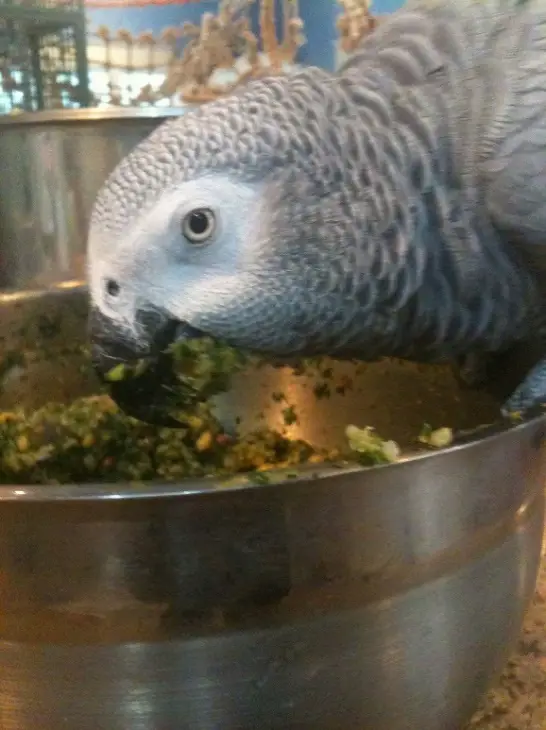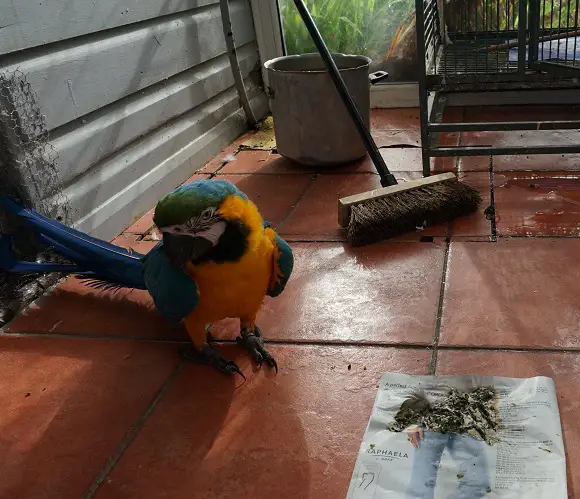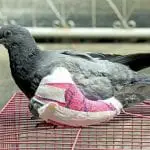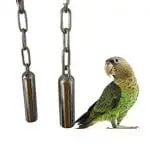Talking about bird poop may not be the most glamorous topic out there, but if you own a bird, especially a parrot, knowing a thing or two about parrot poop may be a big help to you.
One thing about birds, in general, is that it is very difficult to detect the illness of birds, given that they mask their diseases completely. For most bird owners, weighing their birds frequently is a good way to tell whether their parrot is in good condition or not. For others, however, watching the quality of their birds’ poop helps. This is because the poop of your parrot will stay consistent if it is healthy.
Daily Checking of Poop
Now that we are talking about poop, there are some basic things that we need to know. For one, the digestive system of a bird is simple and efficient. It takes less than a day from the start of the digestion process, from consumption to elimination, which means that they can help in providing you with the needed information regarding the health of your pet.
Also, it is important to know the different components of your parrot’s droppings: the feces, the urates, and the urine.
The feces is the brown or green solid matter in the dropping. The urates refer to the white or cream-colored substances produced by the kidney. Also, the urine is a clear fluid, which serves as the watery waste of the kidneys. These components are generally gathered together before they are expelled out of the body. With birds, they come out as a single dropping.
· Healthy Poop
Most of the time, the poop of your parrot will stay and look the same in terms of size and consistency. Your bird’s diet can also affect the color of the poop at times, which is just normal. Parrots that eat seed will be expected to produce green feces, while those that are fed with pellets produce brownish colored feces.
Carrots can even give the feces a distinct orange color, while some types of berries may also have an impact on the color. Once these food items have been digested, the poop color will go back to the normal brown or green hue. Note that the urates should always be white, and the urine, clear.
· Watery Poop
Looking at the consistency of your parrot’s poop can also tell you a lot about the health of your pets. When a parrot is stressed, their blood pressure tends to rise, producing watery poop. At the same time, after they eat fruits with high water content, their poop can also be runny, caused by an increase in urine.
Once the stress is removed, the poop will return to its normal consistency, or after the fruit is already digested. Some owners mistake this as diarrhea, but diarrhea only happens when the fecal matter of the dropping is not formed well. If this is the cause, you may need to be concerned.
· Tube Shaped Poop
If your bird just ate fruits or is stressed, you will notice a tube-shaped matter in their droppings. The size should stay consistent. If you notice a decrease in frequency or size, it may be a sign that your parrot is not eating well, or is experiencing an intestinal blockage. The droppings should also have no odor. Becoming familiar with how your parrot’s poop looks like will help you spot abnormalities quickly, bringing them to the attention of your veterinarian.
· Abnormal Poop
The droppings of the birds may vary, especially depending on species. Several factors also come into play, including age and diet. A normal inspection of poop in a period of several days will also help define what is considered abnormal for your pet.
As a responsible owner, you need to be able to identify between a simple, temporary change, and an actual illness, such as a bout of diarrhea. Observe any changes in volume, color, consistency, as well as the number of droppings.
Some of the signs of abnormal poop include feces that are light in colors, such as rusty brown, mustard yellow, or feces with blood. Feces that are unusually large and coarse-textured, mushy or watery may also be signs of an abnormal poop, as well as feces that contain undigested food. Urine with any color is also a bad sign, as well as urates that are either green or yellow.
· Increase or Decrease in Poop
You may also notice a significant increase or decrease in the number of droppings. When dehydrated, you can encourage your bird to bathe or drink. Avoid prying open the beak of your bird to attempt forcing water down as this may lead to aspiration, and worse, could even lead to death.
In order to avoid the possibility of misinterpreting signs, it is helpful to take the recent meals of your parrot into account. Beets and blueberries, in particular, will alter the color of your pet’s feces significantly. Also, a diet that is filled with moisture, such as vegetables and fruits, may also increase the output of urine among parrots.
While you keep a close eye on abnormal poop, do not be extremely alarmed at ones that are oddly colored. This may only come as a result of the color in foods that have been eaten. If the droppings are abnormally consistent for a period of 24 hours, you may want to consider calling your veterinarian.
When visiting the vet, it is recommended to bring the freshest poop sample that you can get. To collect fecal matter, it is best to use wax paper. You can line the cage the night before in order to catch the morning poop.
The Habit of Check

All pet owners hope that their birds stay as healthy as possible. Do not wait for your parrot to start showing signs of weakness before you start learning how to observe poop. In fact, now is the time to do so, while your parrot is still healthy. You can start by using a plain print newspaper, wax paper, or white paper, lining them up on the floor of your cage so that you can clearly see the droppings. Once you get the idea of what healthy poop looks like, it would be easier for you to spot abnormal signs later.
If you use corn cob, pine shaving, pellets, or other floor coverings for the cage, you may find it challenging to observe your parrot’s poop. While you may still want to continue using them, it would be recommended to switch to paper at least once a month so that you can properly note down any unusual changes in the poop of your bird.
What to Do Next
If unfortunately, you have confirmed the abnormal poop of your parrot, you need to start treatment right away. In certain cases, this can involve basic things such as adjusting the diet of your parrot. In extreme cases, however, such as with liver failure, kidney, or internal bleeding, there is a possibility that your bird may no longer recover. Rather than medicating them on your own, it is best to consult your local avian veterinarian for guidance all the time.



